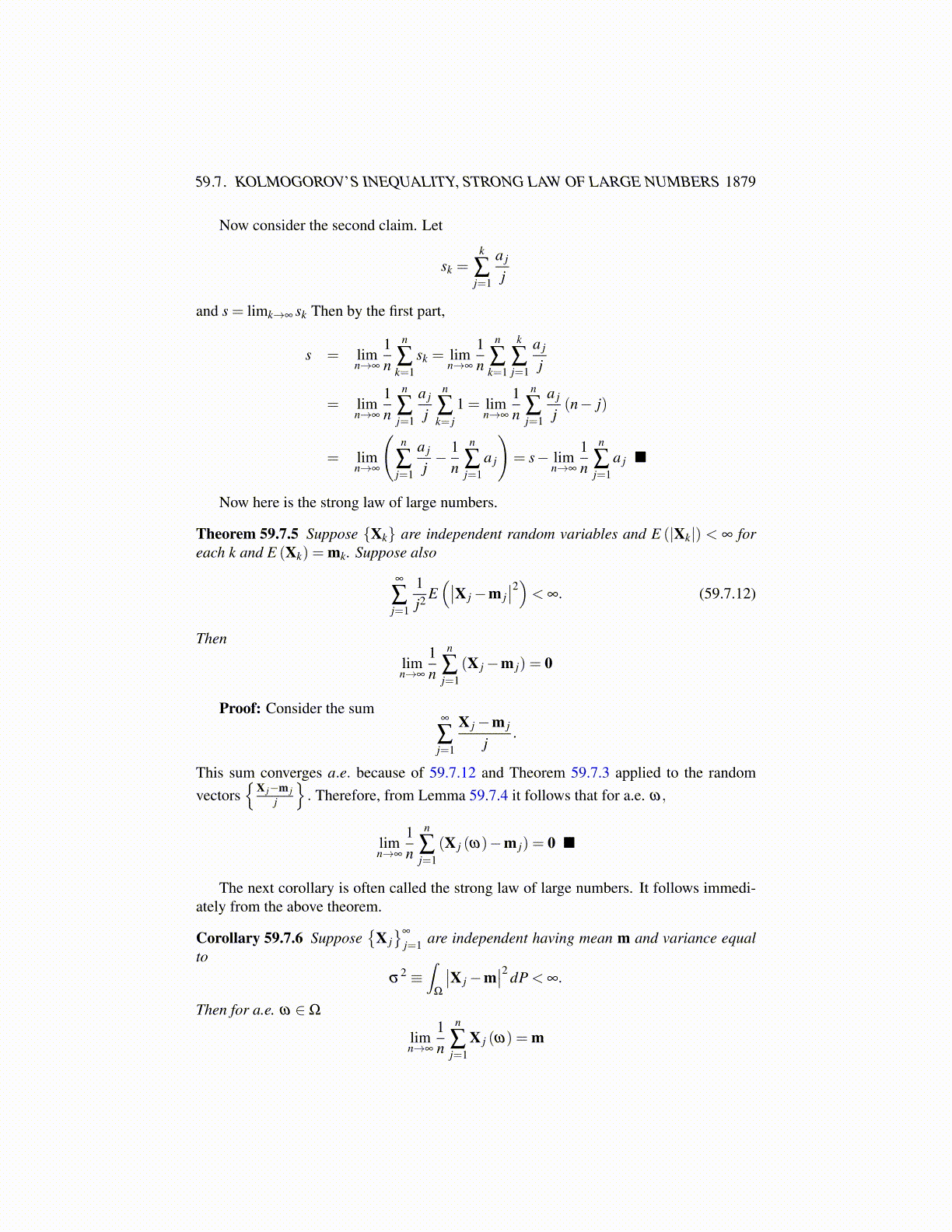
59.7. KOLMOGOROV’S INEQUALITY 1879
Now, summing these yields
ε2P(A)≤
∫Ω
XA
∣∣∣∣∣ n
∑j=1
X j
∣∣∣∣∣2
dP≤∫
Ω
∣∣∣∣∣ n
∑j=1
X j
∣∣∣∣∣2
dP
= ∑i, j
∫Ω
(Xi,X j)dP
By independence of the random vectors the mixed terms of the above sum equal zero andso it reduces to
n
∑i=1
∫Ω
|Xi|2 dP
This theorem implies the following amazing result.
Theorem 59.7.3 Let {Xk}∞
k=1 be independent random vectors having values in a separablereal Hilbert space and suppose E (|Xk|)< ∞ for each k and E (Xk) = 0. Suppose also that
∞
∑j=1
E(∣∣X j
∣∣2)< ∞.
Then∞
∑j=1
X j
converges a.e.
Proof: Let ε > 0 be given. By Kolmogorov’s inequality, Theorem 59.7.2, it followsthat for p≤ m < n
P
([max
m≤k≤n
∣∣∣∣∣ k
∑j=m
X j
∣∣∣∣∣≥ ε
])≤ 1
ε2
n
∑j=p
E(∣∣X j
∣∣2)≤ 1
ε2
∞
∑j=p
E(∣∣X j
∣∣2) .Therefore, letting n→ ∞ it follows that for all m,n such that p≤ m≤ n
P
([max
p≤m≤n
∣∣∣∣∣ n
∑j=m
X j
∣∣∣∣∣≥ ε
])≤ 1
ε2
∞
∑j=p
E(∣∣X j
∣∣2) .It follows from the assumption
∞
∑j=1
E(∣∣X j
∣∣2)< ∞
there exists a sequence, {pn} such that if m≥ pn
P
([max
k≥m≥pn
∣∣∣∣∣ k
∑j=m
X j
∣∣∣∣∣≥ 2−n
])≤ 2−n.